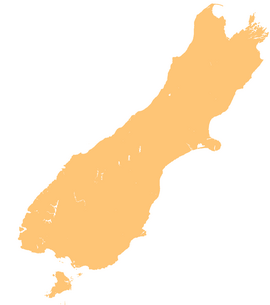| Waingaro River | |
|---|---|
 Mouth of the Waingaro River Mouth of the Waingaro River | |
| Route of the Waingaro River | |
  | |
| Location | |
| Country | New Zealand |
| Physical characteristics | |
| Source | |
| • coordinates | 41°01′23″S 172°33′12″E / 41.023°S 172.5532°E / -41.023; 172.5532 |
| Mouth | |
| • location | Tākaka River |
| • coordinates | 40°52′56″S 172°48′37″E / 40.8822°S 172.8102°E / -40.8822; 172.8102 |
| Length | 37 km (23 mi) |
| Basin features | |
| Progression | Waingaro River → Tākaka River → Golden Bay / Mohua → Tasman Sea |
| Tributaries | |
| • left | Stanley River, Lindsay Creek, Fuller Creek, Devil River, Little Waingaro River |
| • right | Ruby Creek, Skeet Creek |
The Waingaro River is a river of the Tasman Region of New Zealand's South Island.
Geography
Waingaro River initially flows east down a straight valley formed by the southern flanks of Snowdon Range and the northern flanks of Lockett Range within Kahurangi National Park. The headwater is near the 1,604 metres (5,262 ft) Waingaro Peak within the Lockett Range, accessible via a tramping track from Fenella Hut. Shortly upstream of the confluence with the Stanley River, the only bridge over the Waingaro River is located. This simple suspension bridge gives access for trampers to Waingaro Forks Hut.
Downstream from here, the Waingaro River turns to flow generally north close to the eastern edge of Kahurangi National Park. Once it reaches the Takaka Plains it flows northeast to reach the Tākaka River eight kilometres south of Tākaka, just downstream where State Highway 60 crosses the Tākaka River.
History
There are three rivers on the Takaka Plains and during times of early colonial settlement, drownings were common as no bridges had been built yet. During that time, a common greeting was "how is the river?" This is the title chosen for a book on Tākaka history published in 2017.
The Waingaro River caused flooding on the Takaka Plains in Easter 2016 and in January 2017.
Legal action was taken in 2016 over Waingaro River irrigation consents amid concerns that this may adversely affect the nearby Te Waikoropupū Springs. Whilst the springs themselves are protected, the aquifer feeding the system is not. In 2023 the Environment Court awarded the springs and their aquifer a Water Conservation Order, the highest legal protection.
See also
References
- "Place name detail: Waingaro River". New Zealand Gazetteer. New Zealand Geographic Board. Retrieved 1 December 2019.
- ^ "Untitled". NZ Topo Map. Retrieved 1 December 2019.
- Barrett, Pat (1 October 2015). "12 destinations on the Lockett Range". Wilderness. Retrieved 1 December 2019.
- "Anatoki and Waingaro Tracks: Kahurangi National Park" (PDF). Department of Conservation. Retrieved 1 December 2019.
- "Waingaro Forks Hut, Kahurangi National Park". Wilderness. 5 May 2016. Retrieved 1 December 2019.
- Hindmarsh, Gerard (18 November 2017). "Old diaries inspire new Takaka history". Stuff.co.nz. Retrieved 1 December 2019.
- Sivignon, Cherie (22 January 2017). "Wild weather hits Nelson region, causing floods and closing roads". Stuff.co.nz. Retrieved 1 December 2019.
- Lew, Kai Ping (22 January 2017). "'It was horrendous' – Takaka family could only watch as Waingaro River flooded their property". 1News. Retrieved 1 December 2019.
- Sivignon, Cherie (10 March 2016). "Iwi raise concerns about water take plans near treasured Te Waikoropupu Springs". Stuff.co.nz. Retrieved 1 December 2019.
- "NZ's biggest freshwater springs granted highest legal protection". 1 News. Retrieved 28 September 2023.
- "Water Conservation Order: Te Waikoropupū Springs". Environmental Protection Authority. Retrieved 28 September 2023.
- "Highest legal protection for New Zealand's largest freshwater springs". beehive.govt.nz. 21 September 2023. Retrieved 28 September 2023.